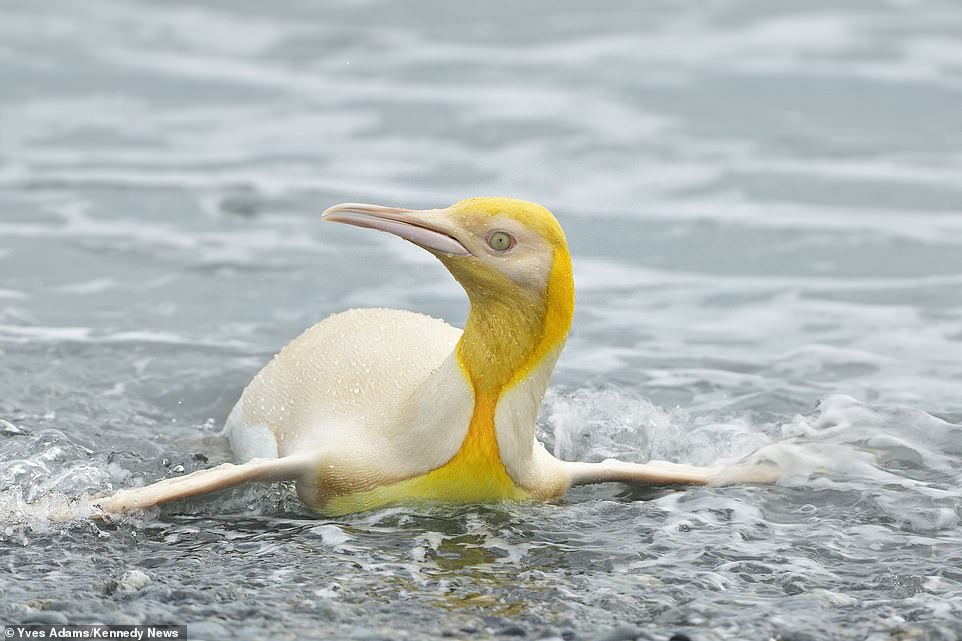
(Image credit: Kennedy News and Media/Yves Adams)
Although black-and-white tuxedos are the norm in penguin society, one stylish guy is challenging the status quo by donning a trendy yellow coat.
Just recently were the photographs of the endangered penguin made public after a wildlife photographer had taken them on a South Georgian island in December 2019. In the midst of a commotion including sea elephants, Antarctic fur seals, and thousands of other king penguins, a king penguin “walked up straight to our direction,” as described by Belgian photographer Yves Adams in an Instagram post. “How fortunate would I feel!”
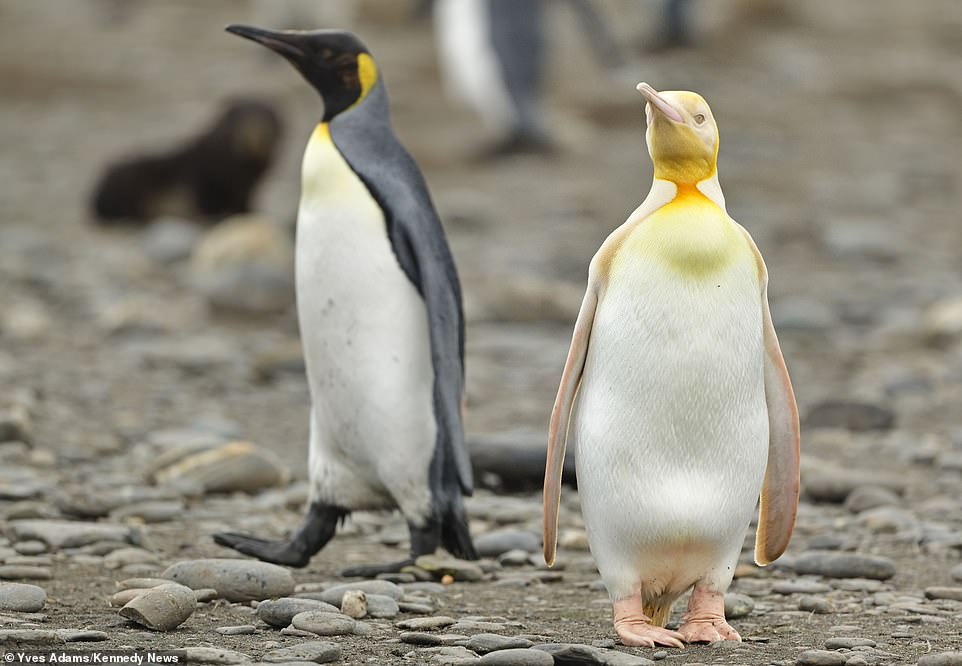
Adams had halted on a beach in South Georgia while conducting a two-month photography excursion across the South Atlantic. While he was removing protective gear, he noticed a group of penguins swimming towards the shore, and he couldn’t help but notice one in particular.
A yellow penguin is something I’d never heard of or seen before. “This was the only yellow one there out of 120,000 birds on that beach,” Adams told Kennedy News and Media. When it hit us, we all went completely bonkers. We set aside all of the safety gear and snatched up our cameras.
Like their closely related relative the emperor penguin (Aptenodytes forsteri), the king penguin (Aptenodytes patagonicus) usually sports a black-and-white plumage accented with a collar that flashes a yellowish-gold hue. Though not all species possess them, the yellow pigments are “unique to penguins,” as stated by the Australian Antarctic Program.
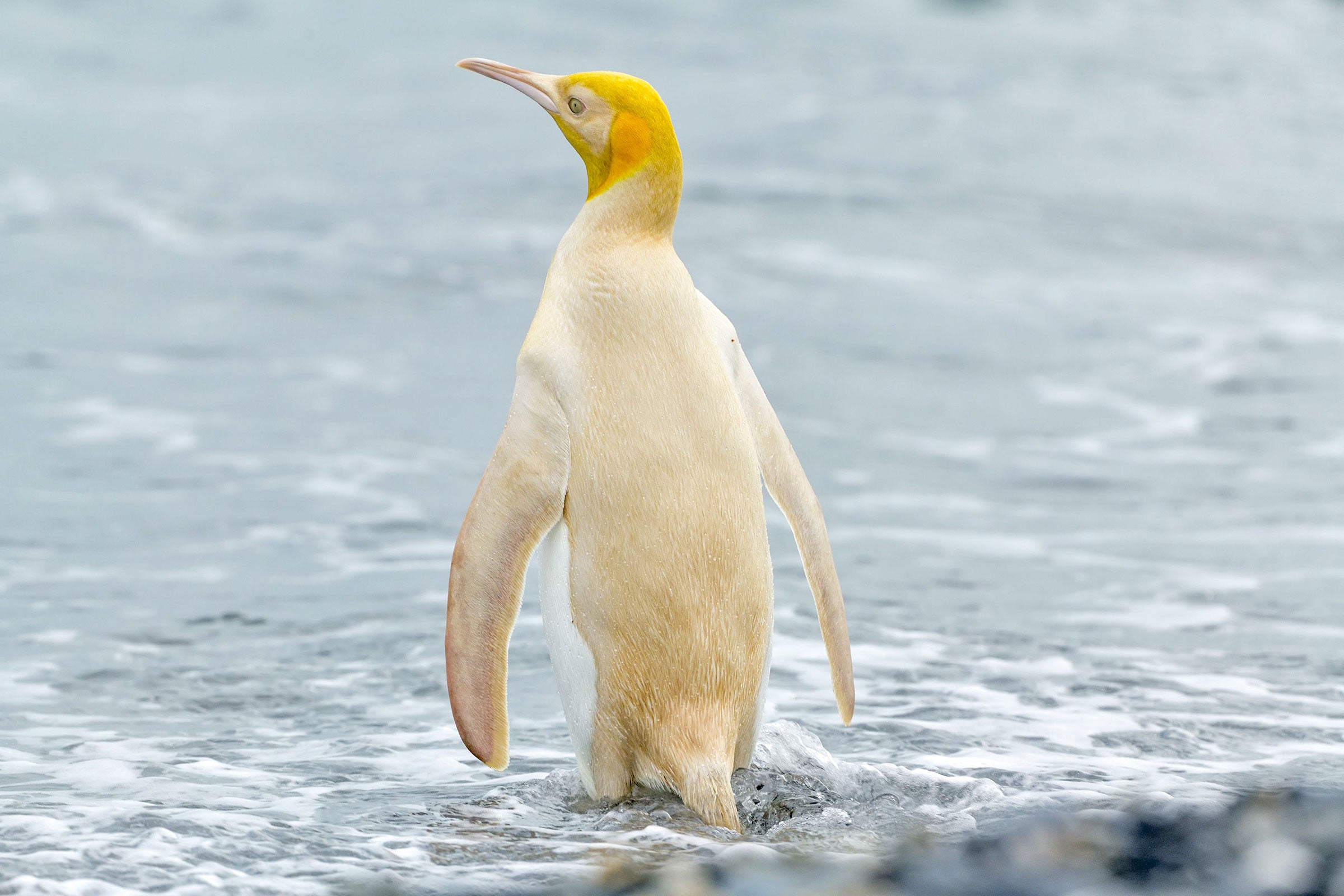
It appears that this penguin has kept its yellow plumage but has shed its black plumage, which is usually colored by a substance called melanin.
The Australian Antarctic Program reports that penguins with distinctive plumage are uncommon and that it can be challenging to determine the source of the unusual hues just by observing the penguins. Birds can experience a wide range of abnormal colors as a result of their environment, food, and illness, but genetic abnormalities account for the vast majority of cases. Examples of penguins that can be mutated include “melanistic” penguins, whose normally white plumage turns black, and “albinistic” penguins, whose white plumage lacks melanin.
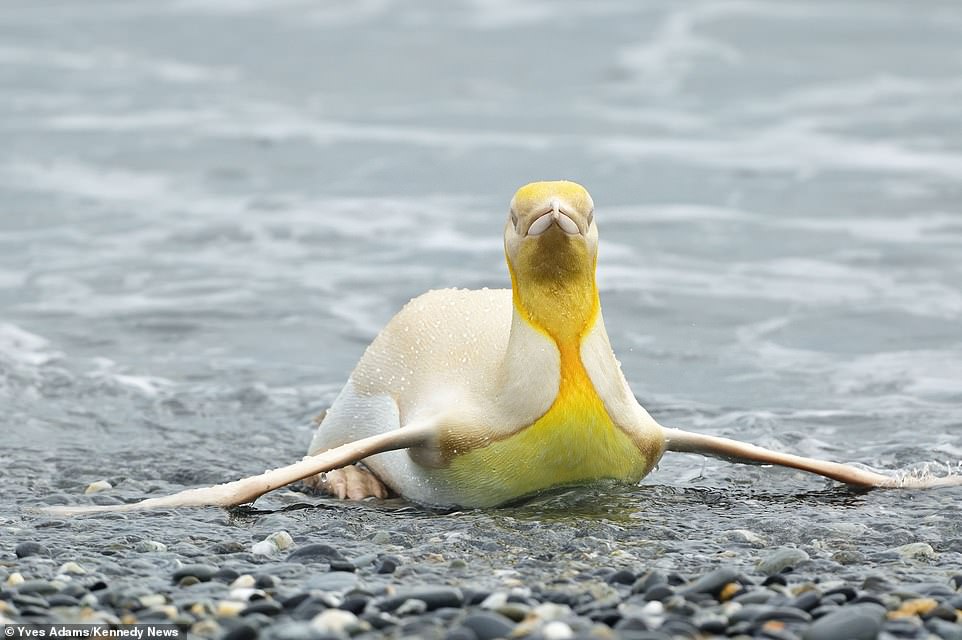
Some of the black feathers of the yellow penguin have lost their melanin pigment.Yves Adams of Kennedy News and Media is credited with the image.
Adams informed Kennedy News that the yellow bird suffers from leucism, a hereditary disorder characterized by partial melanin loss.
Even though she wasn’t on the trip, conservation scientist and UW professor Dee Boersma concurred. Boersma informed Live Science via email that this penguin is leucistic because it lacks pigment. “Real albinos are completely pigment-free.” (According to Boersma, the bird must have kept some of its brown pigment as it has a brown head.)
However, there are many who hold the opposite opinion.
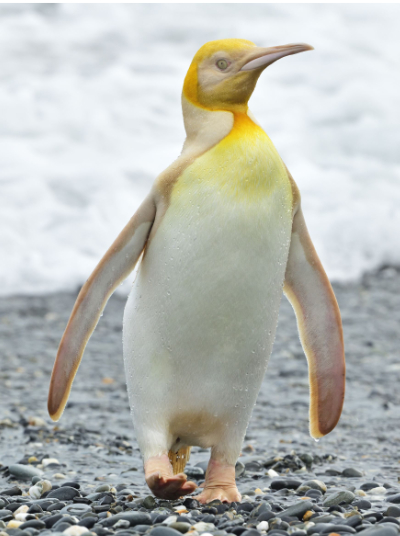
One of the scientists who wasn’t on the trip, Kevin McGraw of Arizona State University’s integrative behavioral ecology lab, said, “I wouldn’t call the bird leucistic” since penguins don’t appear to have any melanin.
The lack of melanin in its plumage, feet, and eyes makes it appear albino, according to McGraw. However, in order to definitively confirm the presence or absence of melanin, “we’d need feather samples for biochemical testing,” he added.
He went on to say that even albinos can have pigments other than melanin.
Although it still has some yellow pigment in its feathers, the penguin has lost the carotenoid, or yellow-orange-red, pigment from its beak and the melanin pigment from its feathers. This means that some pigments had their genetic and cellular machinery deleted while others did not. As far as McGraw could tell, there weren’t many other photographs or birds that were similar to this. “This photo has captivated me.”
There is probably a good reason why birds with such unusual plumage are so rare.
According to McGraw, penguins utilize their plumage and body color for a multitude of purposes, such as mating selection, camouflage, and sun protection. “Survival and reproduction could be affected by such color aberrations.”
Adams remarked that the group was fortunate to “get this show of a lifetime” since the yellow penguin landed near enough for them to witness. A plethora of enormous creatures did not obstruct our view. Every time I come here, the number of people makes it nearly hard to walk on the beach.